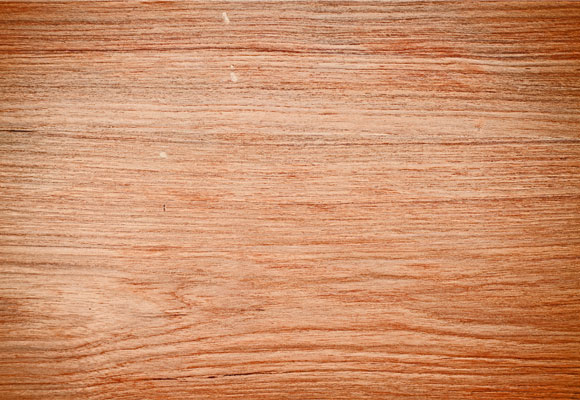
What Is Veneer? Here’s Everything You Should Know
A wood veneer is a term that is familiar to most of us and is mainly related to furniture and interior design. According to the dictionary, veneer refers to “a thin layer of wood or plastic that is glued to the surface of cheaper wood, especially on a piece of furniture.” This explanation is clear but we can go deeper. How is it processed? What are the applications? More questions about wood veneers need to be answered. Therefore, we’ll take this chance to dive into the world of the veneer and share everything about it with you.
What Is Veneer?
A veneer is a thin flat piece of wood that is glued (or nailed, or screwed) onto a flat core panel that is made of other types of manufactured wood. These flat panels are usually used to make parquet floors, cabinets, or other furniture. Veneers can be as thin as 0.6mm and they are usually less than 3mm thick.

Veneer Production
Veneers are often processed at a veneer manufacturing mill. When wood logs are sent to the mill, they will firstly be submerged in hot water and softened. After some time, the logs are soft enough and ready for the slicing process. There are some different slicing methods, including rotary cut, flat cut, quarter cut, and rift cut, resulting in different wood grain patterns. Then, the sliced pieces undergo a drying process and are tied in bundles. The next step is to glue and cut the veneer sheets into standard sizes, including 4’x8’, 4’x10’, etc. After finishing all these steps, the final two processes are flexing and sanding.
This slicing way of processing wood logs can maximally reduce the waste of wood, compared to cutting thick pieces of solid wood, because the saw blade thickness, aka saw kerf, can produce waste during the cutting process. This veneer production process makes every wood log precious.

Types Of Veneers
There are several different types of veneers with different features. Let’s take a look.
- Raw Veneers: A raw veneer, as the name suggests, refers to a raw piece of veneer with no backing. Though either side of a raw veneer can be used as the surface, the two sides have different patterns. We need to determine which pattern we want before processing.
- Paper Backed Veneers: When we need to veneer something that has a curved surface like columns, paper-backed veneers can do the job with no cracking. Paper-backed veneers are backed with paper and are usually processed to large-sized sheets. Before gluing the paper backing, workers join smaller pieces of raw veneers together first.
- Phenolic-Backed Veneers: Phenolic-backed veneers are artificial veneers that are backed with phenolic. They are very environmentally friendly, thus becoming more and more popular. Like paper-backed veneers, phenolic-backed veneers are available in large-sized sheets and can be used on columns.
- Laid-Up Veneers: Combining smaller raw veneers can produce large pieces of laid-up veneers. It is a time-consuming yet easy (no technical difficulty) process to create laid-up veneers. Customers can require any size, design, or shape.
- Reconstituted Veneers: Reconstituted veneers also consist of raw veneers, but the difference is the process method. Pieces of raw veneers are laminated to create a wood block. Then, slice the laminated veneer to form wood “grain” of reconstituted veneers. Therefore, this type of veneer is man-made, but it has natural wood cellulose fiber. Reconstituted veneers are ideal replacements for expensive, limited, or endangered exotic woods.
- Wood on Wood Veneers: Wood on wood veneers, also known as 2-Ply veneers, consist of two layers of wood veneers that are bonded together. The grains of the decorative face veneer and the stable backer veneer are vertical to prevent bubbling and telegraphing. Usually, the backer veneer is more cost-effective, such as Okoume.

Advantages Of Using Veneers
Why choose veneers? Certainly, there are many benefits and advantages of using wood veneers. As the temperature changes, solid wood is likely to split or warp due to expanding or contracting. Veneers are very thin slices of wood that are used to cover both sides of core panels, which is an ideal way to stabilize core panels and prevent them from deformation. Besides, the glue can further make the panels stronger. Veneers are recyclable and environmentally friendly, thus using wood veneers can protect the environment. In addition, the veneer is a versatile material that can veneer a variety of core surfaces. Whatever style you like, you’ll get it from the veneer at a cheaper price.

Veneer Applications
Traditionally, wood veneers are commonly used on interior decoration and furniture such as cabinets, doors, floors, shelves, etc. The core materials are plywood, MDF, or particleboard, but the surfaces are covered with wood veneers. This is a cost-effective way to get a solid wood appearance for our furniture and interior decoration. With countless grains and pattern options, veneers have more consistency in appearance than hardwood.
Nowadays, the versatility of veneers goes further. Designers from different industries are trying to incorporate flexible veneers into their works, such as musical instruments, jewelry, lighting, wall art, audiophile speakers, wooden cards, aircraft, etc.

Circular Saw Blades For Cutting Veneers
Due to the structure of a wood veneer, it is a challenge to cut off a veneer board without creating cracks in it. Scoring saw blades are designed to solve this problem. With a conical scoring saw blade or a set of adjustable scoring saw blades mounted on a table saw, the finish of the veneer panel will be clean and precise.
Konetool has rich experience in supplying circular saw blades like scoring saw blades. We have been dedicated to providing premium woodworking tools and brilliant solutions for our customers for over 10 years. If you’re looking for outperformed tungsten carbide tools for your projects, please feel free to contact us and request a quote. Our sales team and technicians are ready to help you.